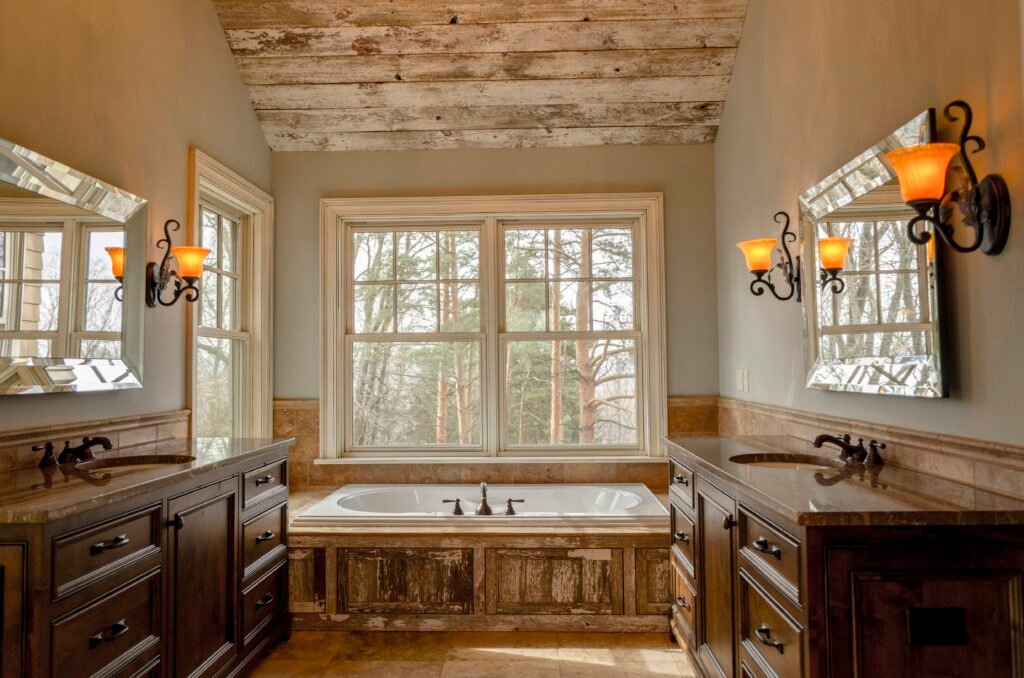
Imagine stepping into your bathroom and feeling a sense of calm and security, knowing that every element has been carefully designed to prioritize your safety. From sturdy grab bars strategically placed to prevent slips and falls, to non-slip mats providing stability under your feet, creating a safe bathroom environment ensures that you can confidently go about your daily routines without worry. In this article, we will explore the various aspects of bathroom safety, offering practical tips and advice to help you transform your bathroom into a haven of security and peace of mind.
Slip-resistant flooring
Slip-resistant flooring is essential for creating a safe bathroom environment. When it comes to bathroom floors, it’s important to install materials that provide traction and reduce the risk of slips and falls. One option is to choose non-slip flooring materials specifically designed for wet areas. These materials have a textured surface that offers better grip even when the floor is wet.
Another approach is to select tiles with a textured surface. These tiles come in various styles and designs, allowing you to create a beautiful bathroom while prioritizing safety. The texture on the tiles provides added friction, making it easier to walk without slipping. Additionally, you can consider adding rugs or mats in strategic areas to enhance grip and stability. These can be particularly useful near the bathtub or shower where water is most likely to accumulate.
Grab bars
Installing grab bars in your bathroom is another important step in ensuring safety. These bars provide stability and support, especially for individuals with limited mobility or balance issues. It is crucial to install grab bars near the toilet and shower, as these are areas where accidents are common. A properly placed grab bar can prevent falls and provide a secure hold when moving in and out of the shower or when sitting down or standing up from the toilet.
When choosing grab bars, opt for ones with a non-slip surface. This will maximize grip, even if your hands are wet. Additionally, ensure that the grab bars are properly installed for stability. It is best to have a professional handle the installation to ensure they are securely fixed to the wall and can support your weight.

This image is property of images.unsplash.com.
Walk-in shower
A walk-in shower can be a great addition to any bathroom, particularly for those who struggle with stepping over a threshold or require wheelchair accessibility. By eliminating the need to step into or out of the shower, the risk of tripping or falling is significantly reduced.
To enhance safety, it’s essential to ensure that the shower floor has a non-slip surface. This prevents accidents caused by slippery conditions. Non-slip shower mats can also be added for extra grip. Consider installing a shower seat as well, which provides a stable place to sit while showering and reduces the risk of falls.
Toilet safety
Toilet safety is an important aspect to consider in a bathroom. Installing a raised or elevated toilet seat can make it easier to sit down and stand up, especially for individuals with limited mobility or strength. These raised seats reduce the strain on your knees and make using the toilet more comfortable.
In addition to the raised seat, a toilet safety frame can provide additional support. These frames are mounted around the toilet, providing handles and stability when sitting down or getting up. They can be especially beneficial for those who require extra assistance or have balance issues.
For improved hygiene and convenience, consider installing a bidet. Bidets offer a more thorough cleaning compared to toilet paper and can be particularly helpful for individuals with mobility limitations or specific medical conditions. They can be installed as a separate unit or integrated into the toilet itself.

This image is property of images.unsplash.com.
Proper lighting
Proper lighting is crucial in creating a safe bathroom environment. Insufficient lighting can increase the risk of accidents, especially during nighttime use. Make sure your bathroom has adequate lighting to ensure clear visibility.
Additionally, you can consider using nightlights or motion sensor lights to assist with nighttime bathroom visits. These provide enough illumination to navigate the space without overwhelming brightness. Lighted mirrors or vanity lights can also be installed to enhance visibility around the sink area and improve grooming tasks.
Accessible storage
Accessible storage is key to creating a safe and organized bathroom. Ensuring easy access to frequently used items reduces the risk of straining or reaching for items that are out of reach. Install reachable shelves or cabinets to keep essentials within easy reach. Avoid placing heavy or bulky items on high shelves to prevent accidents.
Consider using open storage solutions such as baskets or wall-mounted holders for frequently used items. These solutions not only provide easy access but also keep the bathroom clutter-free, reducing the chances of tripping over misplaced objects.

This image is property of images.unsplash.com.
Temperature control
Proper temperature control in the bathroom is essential to prevent scalding accidents. Set your water heater to a safe temperature to avoid hot water burns. It is recommended to set the temperature to a maximum of 120°F (49°C). This reduces the risk of accidental burns, especially for children or elderly individuals who may have reduced sensitivity to heat.
For precise control of water temperature, you can install thermostatic mixing valves. These valves maintain a constant temperature and prevent sudden changes in water temperature. They are especially beneficial if there are multiple users in the household or if the water supply tends to fluctuate.
To provide added protection against scalding accidents, consider using anti-scald devices. These devices can be installed on faucets and showerheads to regulate water temperature and prevent sudden hot water bursts. They are particularly important for households with children or elderly individuals who may accidentally turn the water temperature too high.
Slip-resistant bath and shower mats
Slip-resistant bath and shower mats are essential for preventing slips and falls in wet areas. Place non-slip mats in the bath and shower areas to provide a secure footing. These mats have strong suction cups underneath, ensuring they stay in place even when wet.
Regularly clean and replace the mats as needed to maintain their effectiveness. Over time, mats can become worn or lose their non-slip properties, which may compromise their ability to prevent accidents. By regularly cleaning and replacing them, you can ensure that they continue to provide a safe surface to stand on.
Elevated countertops and sinks
Installing countertops and sinks at a comfortable height can greatly improve bathroom accessibility. By elevating these fixtures, you can minimize the need for bending or straining, reducing the risk of injury.
Consider wall-mounted sinks for wheelchair accessibility. These sinks are attached to the wall, providing open space underneath for wheelchair users to have easier access. Additionally, choosing countertops with rounded or sloped edges can help minimize injury risks in case of accidental bumps or falls.
Emergency preparedness
Being prepared for emergencies is essential for bathroom safety. Keep emergency contact numbers easily accessible in case of accidents or medical emergencies. You can have a list posted near the phone or inside a medicine cabinet.
Consider installing an emergency call button system. These systems can be easily activated to alert emergency services in case of an accident or injury. They provide peace of mind, particularly for individuals who live alone or have medical conditions that increase the risk of emergencies.
Ensure that the pathways in the bathroom are clear and unobstructed, allowing for quick and easy access to emergency exits. Remove any potential hazards such as rugs or clutter that can impede movement in case of an emergency.
By following these safety measures and creating a safe bathroom environment, you can significantly reduce the risk of accidents and promote overall well-being. Prioritizing safety in the bathroom is essential for everyone, regardless of age or mobility.

